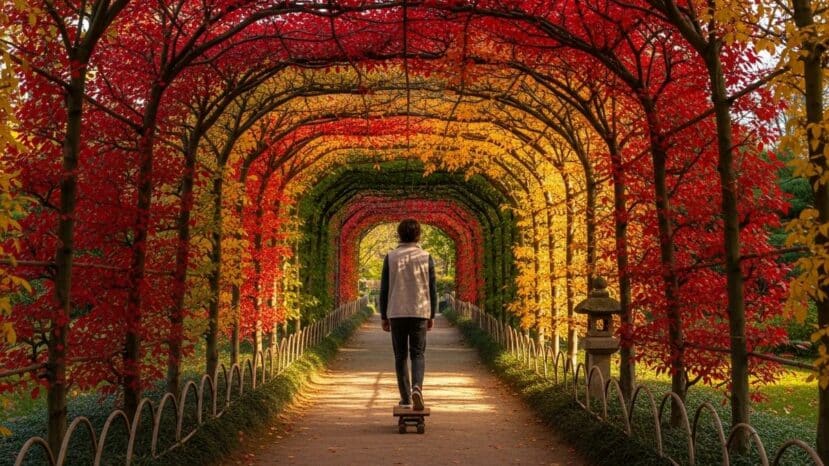Japanese gardens around Paris: 5 ideas for visits this autumn

As the foliage turns red, the Japanese gardens around Paris take on a soothing, vivid hue. This makes autumn an ideal time to slow down, breathe and reconnect with nature. This selection will point you in the direction of nearby outings, suitable for both weekends and weekday breaks.
Where to see Japanese gardens in autumn around Paris
The recent selection highlights 5 emblematic sites, between institutions and historic estates. Japanese gardens offer gravel paths, Japanese steps and silent ponds. What’s more, the stone-water-vegetation balance helps to calm the mind, even in busy times. You can take a break without leaving theParis region.
The Musée départemental Albert-Kahn, in Boulogne-Billancourt, is an ideal place to stop. Its path alternates between villages and landscape scenes, with flamboyant maple trees. On the other hand, the Guimet museum annex houses a discreet tea pavilion and a refined plant setting. These places remain very popular in autumn.
Relaxation and culture: between plant poetry and rituals
The UNESCO Peace Garden, designed in a spirit of dialogue, can be enjoyed on organized tours. Domaine de Courances also boasts a Japanese-inspired garden with golden reflections. Japanese gardens gain in nuance under low
“
When the season turns, the eye perceives the sobriety of the stones, the echo of the water, and the clarity of the gesture.”
Further south of Paris, certain arboretums offer an Asian-style “island”, very soft at the end of the day. The palmatum maples turn copper, sometimes intense purple. The stone lanterns structure the view, without freezing it. Sounds remain subdued, encouraging attention and conscious walking.
Itineraries and travel times for these zen settings
Most addresses can be reached by car or public transport, in 20 to 90 minutes, depending on traffic. So access from Paris is easy for a short outing. Plan an early start, as the light highlights the textures better. The Japanese gardens take on a rare depth.
- Check the autumn timetable before departure.
- Bring comfortable shoes for the trails.
- Respect the peace and quiet, even when taking photos.
- Avoid touching moss and lanterns.
- Keep children close to water.
Families appreciate the short loops and unobtrusive benches. On the other hand, some passages have steps or Japanese steps. Don’t forget strollers and mobility-impaired people, as paths can be narrow. If possible, ask for a map at the entrance.
Some venues use time-stamped ticketing at weekends. So booking in advance means less waiting and less stress. Japanese gardens attract many visitors during the peak of color. Remain flexible, as the weather influences the intensity of the foliage.
Visitor tips and seasonal best practices
Arrive early to take advantage of the calm, then take a break by the water. Then set off again slowly to capture other frames. In this way, each detour renews the perspective. The eye is opened to the sobriety of the compositions.
Photography is welcome, but you’ll need to be quick and unobtrusive. Also, avoid tripods in narrow passages. Maple trees offer a peak of hues over just a few weeks. This uncertain tempo adds to the charm of the season.
Why these gardens are so inspiring in Île-de-France
The encounter with stone, water and trees acts as a balm. What’s more, the measured pace stimulates attention to oneself and to others. Japanese gardens emphasize the present moment, without visual overload. This encourages regular, almost meditative breathing.
These places bring art, botany and everyday gestures into dialogue. In addition, tea ceremonies and guided tours shed light on the meaning of shapes. It’s easy to understand why each element is weighed. It’s a gentle way of nurturing cultural curiosity.
Last but not least, patient maintenance gives these sensitive scenes their strength. So support them with a respectful, attentive visit. Japanese gardens thrive when their use remains sober. A sympathetic eye is often enough to preserve their balance.





No comments
Post a comment
Always participate in accordance with the law and with respect for others.